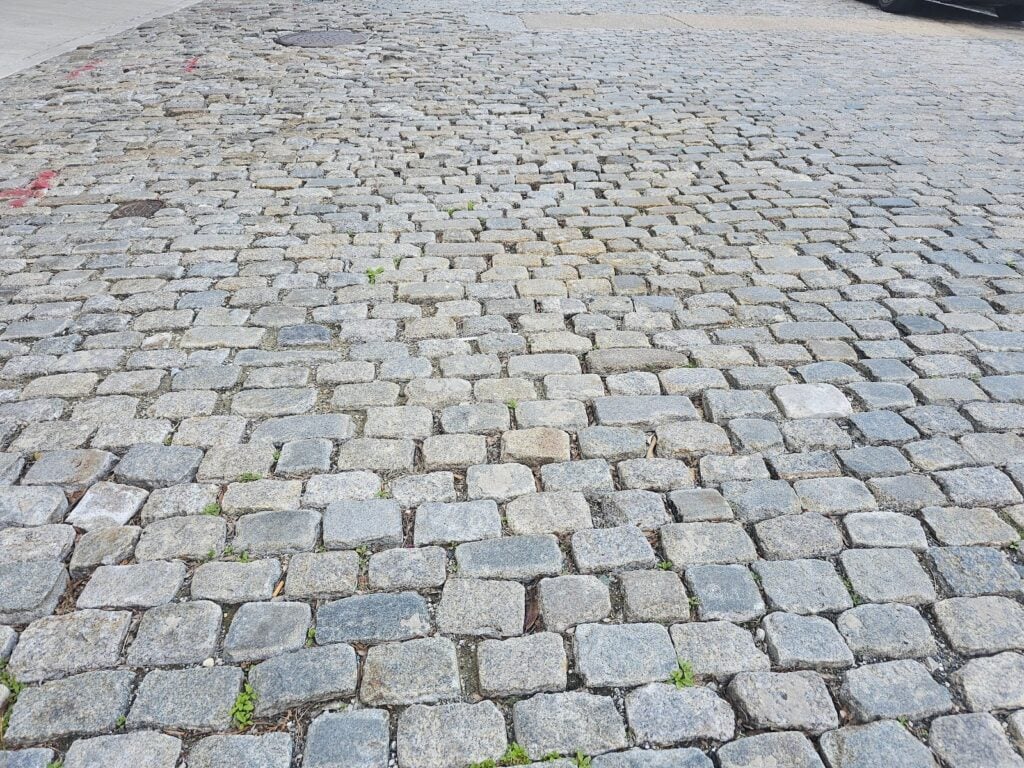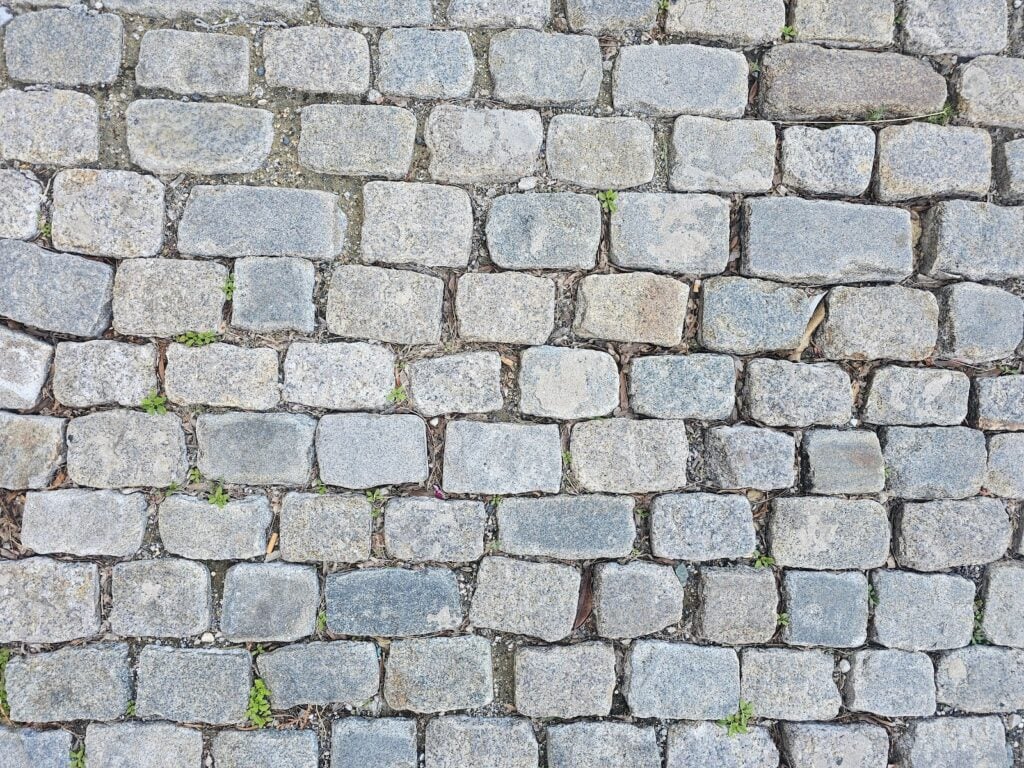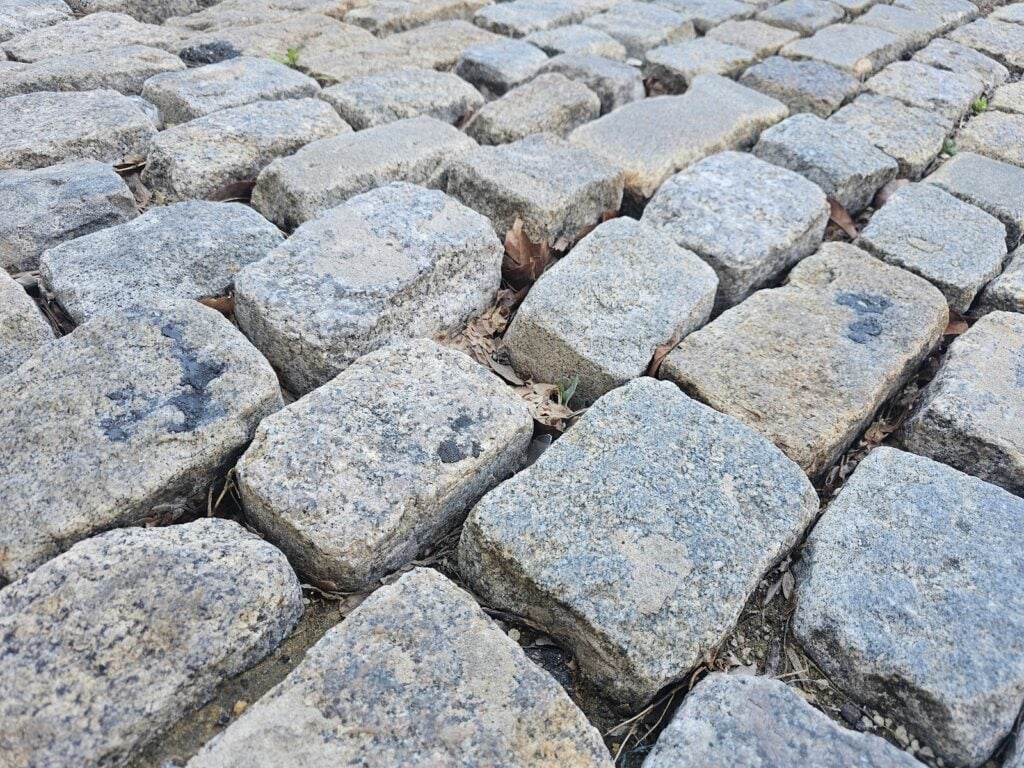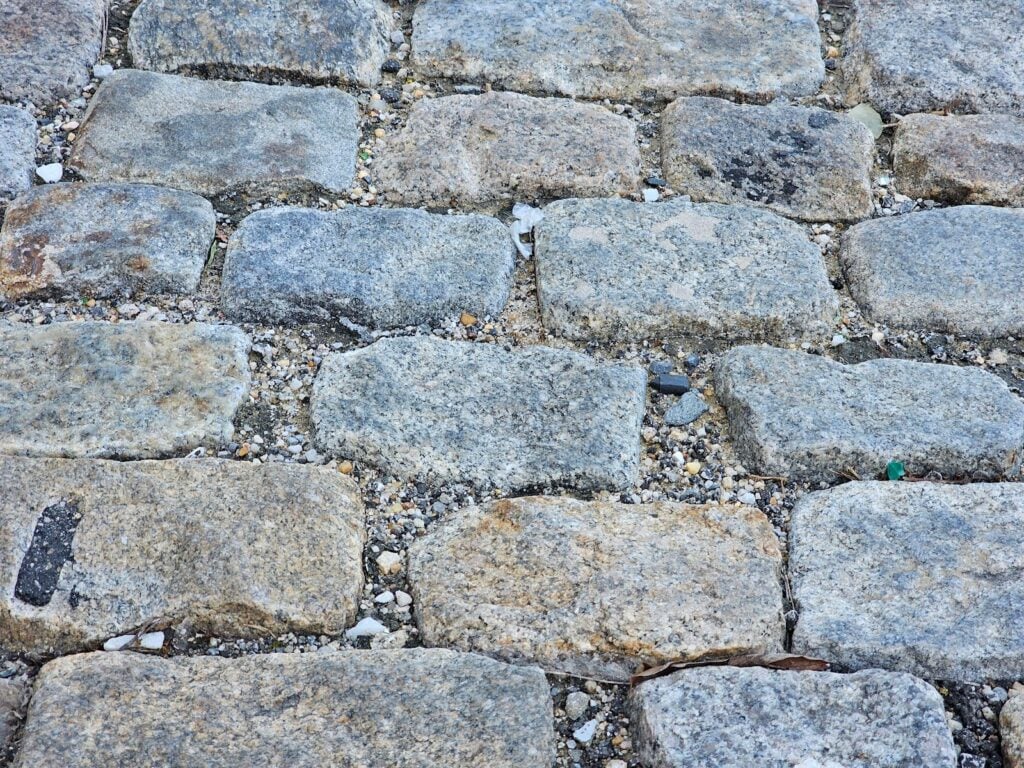Transform Spaces with Cobblestone Paving
Here on our website, we’ve looked at a bunch of different types of paving, particularly for patios and walkways, sometimes for landings and also stairways that go between exterior paved areas. Today, we’re looking at one of the most classic historic types of paving, cobblestone. Mostly, here in Washington DC, we think of cobblestone as being used for historic streets. There aren’t a lot of these cobblestone streets left in the middle of the heart of Washington DC, but of course there are some historic neighborhoods that still have some cobblestone street blocks, here and there.

These cobblestone streets have a classic charm that is unmatched by any other type of contemporary or modern paving. CMU type pavers just don’t even come close to having the true historic classic feel. Of course though, there’s nuisances associated with cobblestone streets, as well.
Driving down to cobblestone street can feel a bit like being jumbled in the brain because it shakes the car up and down a lot. It’s not a flat, consistent driving surface. One of the possibly unintended side effects of cobblestone streets is that it has a way of making traffic going a bit slower, similar to the way that speed bumps work, for better or worse. It’s just that, by comparison, cobblestone is consistent where speed bumps only occur where they are specifically placed.
We think that this can be a nuisance or a benefit. It depends if it’s preferable to have traffic slowed or have traffic expedited. The net result though is that traffic can’t flow smoothly on cobblestone paving.
One of the other intrinsic benefits of cobblestone streets is that they are permeable. And a picture below, you can see that there are largely inconsistent joints that run between each of the stones. You can see the dark shadow in this view looking almost right down.

The next picture below shows a different angle of the same street, literally on the same block, but this particular area has been reworked for utility sewer upgrades. When I lifted the stone up, they didn’t pack it back as tightly and they didn’t Place stone or a polymer type fill between the individual stones. Therefore, in this example, the stones have more space and open gaps around or between each of the stones.

In most cases, cobblestone streets are made from granite, in fact the actual stoning Quarry Source location is similar to the stone used at a lot of retaining walls, where historic and original, here in Washington dc. We should qualify the use of the word original though, in this case. Many of the retaining walls found around the front yards of historic row homes, here in Washington dc, we’re not built at the exact same time of the construction of the home.
In some cases they were built between 10 and 30 years later when the streets were modified. In some cases, the rate of the streets were modified for drainage and the public sewer system that connects from a curb and gutter gravity based drain system. When the streets are modified, the retaining walls were built, which separated the yard from the adjacent sidewalk and Street by a few feet. Often, those retaining walls were built with a rough cut dark gray and white gray redstone, very similar to these cobbles.
The next picture below is an example where the joints between the stones have been filled with a crushed aggregate type sand. Unlike typical sand used for Brick motor, for example, this particular sand has a wide range of aggregate sizes within the same cell. There is a significant amount of the same composition that is made a very fine, dust size particles, but then there’s also a range that goes from gritty up to very tiny pebbles.
You can see that in the joints, particularly at the perpend joint. The propane joints run perpendicular to the long uninterrupted longitudinal joints. These perpend joints and bed joints come by comparison, are found in both wall, paving, and floor or terrorist type brick construction. The same types of joints can also be used in Bachelor Stone work, if the stone is cut to be consistently sized from your consistently sized. When Ashley stone is cut in random sizes, even the bed joints will be interrupted. Here though, this is a running bond with per pen joints that range only the depth or thickness of each individual stomes.

We can Help
Our company focuses on historic restoration more than modern building upkeep, maintenance, and construction, but our company understands both types of construction very well and a full picture well-rounded approach is needed in any niche in the construction industry. Although we focus on historic restoration, repointing, tuckpointing and historic brick repair, our company also has technical knowledge and competencies in the areas of modern and contemporary construction as well as we become one of the leaders in that area of the market today. Understanding both historic and modern or contemporary construction is useful because both aspects help understand the challenges and potential solutions for challenges in building science and construction.
We can help with a variety of historic masonry restoration needs and upkeep, from modest tuckpointing and or repointing to complicated and extensive historic masonry restoration. Infinity Design Solutions is a historic restoration specialist contractor specializing in both historic masonry restoration such as tuckpointing our repointing, and brick repair. If you have questions about the architectural details or facade of your historic building in Washington DC, reach out and say hello and if we can help we’ll be glad to assist you. You can email us or call us on the telephone at the following link: contact us here.
